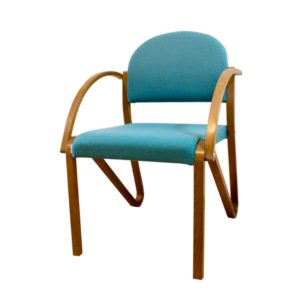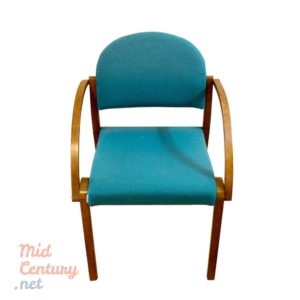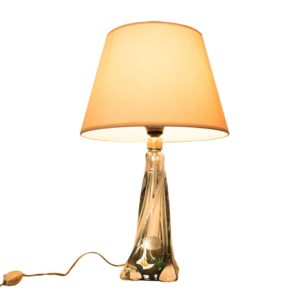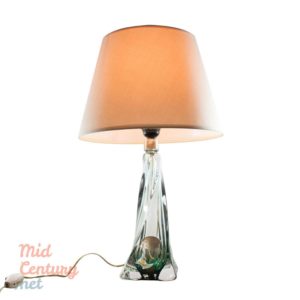Elegant Daybed made in Germany in the 1960s
750 €
Elegant daybed made in Germany in the late 1960s or early 1970s. Made of wood, this sofa is extensible on its left side (see pictures). The model is typical for the period and the vivid green colour, in a nice dialogue with the dark wooden parts, is a recuring theme of the german rationalism in design. The sofa is in good vintage condition. All the defects are visible in pictures.
Out of stock
You may also like
-
Sold out
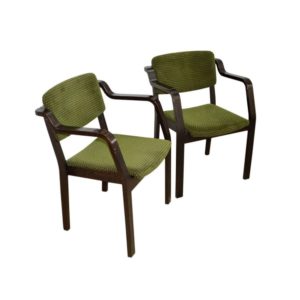
Pair of Gemla Möbler chairs made in Sweeden, in the 1980
Sold ItemsPair of Swedish Gemla Mobler chairs. The structure and the armrests - made of curved wood - give a natural, organic and pleasant shape. This is completed in a beautiful way by the wool upholstery, in a shade of green that is specific for the Mid-Century furniture. This chairs can fit any nice interior, having the ability to create a warm atmosphere in the room. The chairs are in very good shape with only few age-related traces. At Helge River in Diö, in the heart of the old forests of Småland, lies Sweden's oldest furniture factory (founded in 1861). Its inner sanctum, beech and ash are tamed into time- less furniture by skilled craftsmen who know which way the wood likes to bend. Stretching and flexing, easing and teasing, until the steaming hot wood finds its form. And the wood will not be rushed. The transformation from log into chair takes days, sometimes even weeks. The technique has been used by boat and fence builders since ancient times but was refined in the mid 1800's by Thonet into the iconic chair, worn my millions of seats in the cafés of Europe. The shape is determined by the best and the brightest of their time. Back then their names were Peter Celsing, Yngve Ekström, Sigurd Lewerentz and Carl Malmsten. Now they are Jonas Bohlin, Front, Lisa Hilland and Mats Theselius.150 €
Additional information
| Country of Origin | |
|---|---|
| Design Period | 1960-1969 |
| Restoration, Damages | Restained |
| Material(s) | |
| Color(s) | |
| Weight | Standard weight (between 15 kg and 40 kg) |
| Dimensions | Extended width: 202 cm, External dimensions: 77 x 162 x 70 cm (H x W x D), Seat height: 40 cm |
| Duties Notice | If your delivery address is not in the European Union, Iceland, Liechtenstein, Norway, or Switzerland, please be advised that import duty is not included in the prices you see online |
Product Enquiry
About Mid-Century
Germany (/ˈdʒɜːrməni/ (About this sound listen); German: Deutschland, pronounced [ˈdɔʏtʃlant]), officially the Federal Republic of Germany (German: Bundesrepublik Deutschland, About this sound listen (help·info)),[e][8] is a federal parliamentary republic in central-western Europe. It includes 16 constituent states, covers an area of 357,021 square kilometres (137,847 sq mi), and has a largely temperate seasonal climate. With about 82 million inhabitants, Germany is the most populous member state of the European Union. After the United States, it is the second most popular immigration destination in the world.[9][10] Germany’s capital and largest metropolis is Berlin, while its largest conurbation is the Ruhr, with its main centres of Dortmund and Essen. The country’s other major cities are Hamburg, Munich, Cologne, Frankfurt, Stuttgart, Düsseldorf, Leipzig, Bremen, Dresden, Hannover and Nuremberg.
Various Germanic tribes have inhabited the northern parts of modern Germany since classical antiquity. A region named Germania was documented before 100 AD. During the Migration Period, the Germanic tribes expanded southward. Beginning in the 10th century, German territories formed a central part of the Holy Roman Empire.[11] During the 16th century, northern German regions became the centre of the Protestant Reformation. After the collapse of the Holy Roman Empire, the German Confederation was formed in 1815. The German revolutions of 1848–49 resulted in the Frankfurt Parliament establishing major democratic rights.
In 1871, Germany became a nation state when most of the German states unified into the Prussian-dominated German Empire. After World War I and the German Revolution of 1918–19, the Empire was replaced by the parliamentary Weimar Republic. In 1933 the Nazi seizure of power quickly led to the establishment of Nazi Germany which was built upon a dictatorship and consequently led to World War II and the Holocaust. After the end of World War II in Europe and a period of Allied occupation, two German states were founded: the democratic West Germany and the socialist East Germany. Following the Revolutions of 1989 that ended communist rule in Central and Eastern Europe, the country was reunified on 3 October 1990.[12]
In the 21st century, Germany is a great power with a strong economy; it has the world’s 4th largest economy by nominal GDP, and the 5th largest by PPP. As a global leader in several industrial and technological sectors, it is both the world’s third-largest exporter and importer of goods. It is a developed country with a very high standard of living sustained by a skilled and productive society. It upholds a social security and universal health care system, environmental protection, and a tuition-free university education.[13]
The Federal Republic of Germany was a founding member of the European Economic Community in 1957 and the European Union in 1993. It is part of the Schengen Area, and became a co-founder of the Eurozone in 1999. Germany is a member of the United Nations, NATO, the G7 (formerly G8), the G20, and the OECD. The national military expenditure is the 9th highest in the world. Known for its rich cultural history, Germany has been continuously the home of influential and successful artists, philosophers, musicians, sportspeople, entrepreneurs, scientists, engineers, and inventors.










